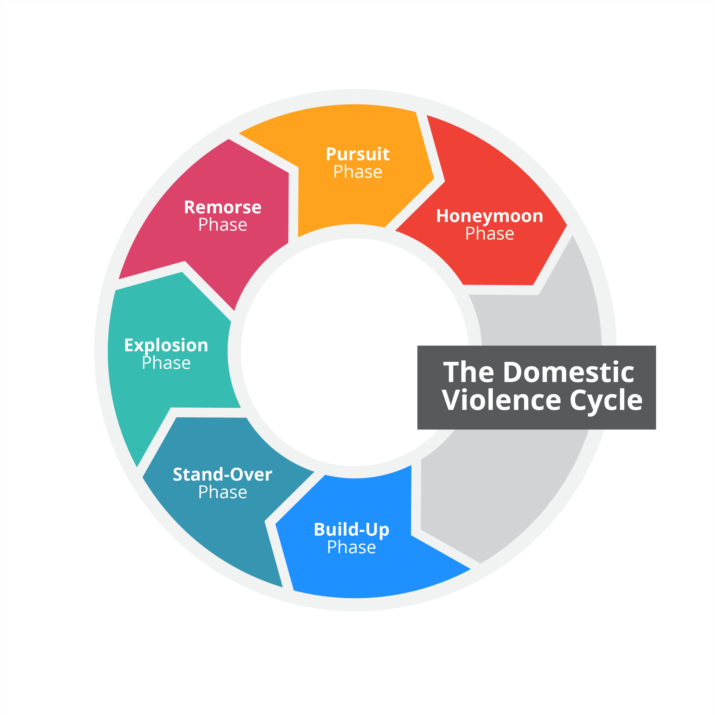
28 Nov What you need to know about Intimate Partner Violence: Part 2
Trigger Warning: Violence
Welcome to the weather channel.
What has weather got to do with IPV? Absolutely nothing and everything. So here is why I am using it: You may have thought that when your neighbours ‘were at it again’, their ‘fight’ was just another incident.
When our American friends get a hurricane, they give it a name as if it were an individual. It’s a weather event. They see the funnel forming, it makes impact, destroys everything in its path and eventually dies down and finally the sun comes back out. We all know there is so much more to that event than the funnel though. There is a larger storm that can’t be seen in its entirety by the people in it and even more than that, there is a whole weather system that caused the storm to begin with. It caused the storm before it, and every storm that will come after it. We could say that weather has a cyclical pattern that causes different weather events.
Similarly, violence in relationships has a cyclical pattern to it. IPV is not an incident, it is a system of manipulation, rules and abusive consequences designed to coercively control an intimate partner.
IPV is the weather, the violent episode you see is the hurricane funnel.

The Build-Up phase can last an hour or even days. The hypervigilant victim can sense something is off, she gets that feeling of impending danger. The intimate partner is complaining about his boss at work and she can feel the situation grow more and more tense. She may have nothing to do with the reason for his current distress, but the tension is building.
Soon enough, he will feel wronged or neglected and will have unrealistic expectations of her. She knows nothing she does is ever right, so she is aware that she is bound to make a mistake and within seconds the situation can get very dangerous. At the Stand-Over phase she tries her best to de-escalate by not doing or not saying something. She walks on eggshells but too often, this is not enough to prevent the next stage: The Explosion.
This here is the ‘hurricane’. Here, the victim has done (or not done) something that the abuser feels upset or threatened by and he uses his abuse tools from his Coercive Control Tool Box (see part 1) to undermine, dominate and control the victim. The abuse can be loud, exceptionally violent and visible by breaking things in the house or by leaving lasting marks and injury. This is how we see violence with our eyes and hear it with our ears, but it can also take other forms that are much harder to grasp and collect evidence of. The victim will resist the violence, for example by crying to show that it is not ok, by locking herself in a room and avoiding the abuser at all costs, by seeking support, by lodging a police report, by leaving even temporarily or by moving out.
The Remorse phase can go a few ways. The abuser may feel fear that they may be abandoned by the victim or that they could get into trouble and they may become very apologetic. Some might dance between being apologetic and shifting blame. “You know I get like this when you… I’m sorry. But you need to do your part too.” “If you hadn’t …. This would never have happened. You know I love you..”
During the Pursuit phase, the abuser makes promises to change, to give up alcohol or drugs and to go to couples counselling (because “it’s her fault too”) to win her back. He buys gifts and begs and pleads. He may threaten to harm himself and cry a lot. But this phase can also look like an abuser making threats. He may threaten to take or harm the children or a pet, threaten with court action that will somehow negatively impact the victim, threaten to make her homeless or threaten to harm or kill the victim. He may stalk her, monitor her more closely and recruit others to convince the victim to return. He may even try to bargain and negotiate to get out of facing court for his criminal actions. What we’re really seeing here is an abusive person who still tries to manipulate and coerce the victim, even as he tries to win her back.
And many times they do. There are many reasons a victim will get sucked back into the vortex and we’ll be looking at these in Part 3 of this series. This is now the Honeymoon phase, but I prefer to call this the Entrapment phase. This is how victims become entrapped in their relationship with an abusive partner. Just like after the storm has passed and the damage has been surveyed and cleaned away, the sun returns. The storm becomes something we don’t want to think about, we don’t want to remember that. Because here is a brand-new sunny day, and here is the man she married. The reminder of why she started this relationship with him shines across his face. He’s being kind, loving, giving and he’s helping in the house and with the kids. He’s funny, joking around and spending time with the family. He’s building dreams for the future just like before and being on his really best behaviour, which really just proves that violence is a choice. Somehow, during the Honeymoon phase, he seems to deal better with his “anger”. He seems less annoyed overall and the rules that governed the victim’s life seem to have shifted. It’s extremely difficult to not get swept back into what seems like your dream life with the hope that it will last and the storm will never return.
However, just like how the next hurricane is in the making even as the sun shines, it doesn’t take long till this mask starts to crack and the Honeymoon phase shifts to the Build-up phase. Over time, over each cycle, that facade crumbles away faster and the Honeymoon phase gets shorter and shorter. But by then, the victim is so broken, so disempowered, vulnerable, afraid, ashamed and dependent, she becomes stuck, entrapped in a never-ending storm.
This article was written by Elaine Compagno.
In Part 3 we will look at why she doesn’t “just leave him”.
If you or a loved one are in a toxic relationship and need help, please reach out to the national crisis support service, the Domestic Violence Unit at Appogg by calling 179.
You may also use the following services: Violet Chat vso.org.mt, WRF Legal Advice Freephone 8006 2149
